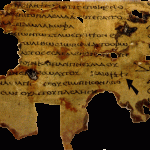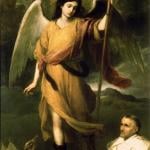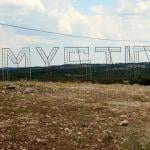Right now, in Jesus studies and Gospels scholarship, there is a volley over whether the Gospels should be read from a narrative-canonical perspective (without scratching under the surface for the “historical Jesus”), or if we should try to use the Gospels as “sources” for the ongoing study of the man Jesus. Recently, Chris Keith and Larry Hurtado edited a collection of essays that tries to relate the two sides in Jesus Among Friends and Enemies: A Historical and Literary Introduction to Jesus in the Gospels (Baker, 2011).

The idea behind this book is that, though we tend to pay attention only to Jesus in the Gospels, there is much to learn about Jesus when we closely inspect the friends and enemies of Jesus, especially as they are depicted in the canonical Gospels. The volume is book-ended by a nice preliminary discussion of Jesus by Chris Keith, and a final epilogue on the impact on Jesus studies by Keith and Hurtado.
The actual “characters” chosen for study are quite appropriate:
“God and Angels” (Edith Humphrey)
“John the Baptist” (Mike Bird)
“The Disciples” (Warren Carter)
“The Family of Jesus” (Richard Bauckham)
“Other Friends of Jesus: Mary Magdalene, the Bethany Family, the Beloved Disciple” (Dieter Roth)
“Secret Disciples: Nicodemus and Joseph of Arimathea” (David Allen(
“Satan and Demons” (Loren Stuckenbruck)
“The Jewish Leaders” (Anthony Le Donne)
“Political Authorities” (Helen Bond)
“Judas Iscariot” (Holly Carey)
The volume is produced in such a way as to fit well as part of an introductory course on the Gospels. Chapters are sized appropriately for classroom use. Sidebars are found throughout the book, giving basic description to all sorts of texts, people, and academic jargon. The overall plan of each chapter involves an introduction to the person(s) under study, then a narrative or redactional perspective from the canonical gospels, and, finally, a conclusion that sums up how that character (or multiple ones) help us to understand Jesus better.
I particularly liked Keith’s introduction, which is a quick study of ancient perspectives on Jesus, especially outside of the canon. Perhaps my favorite chapter study was on “Satan and Demons.” Stuckenbruck points out just how unusual the Gospels are in their portrayal of demons as body-possessing entities. Looking at 1 Enoch, Stuckenbruck explains how some Jews thought that the evil giants (offspring of fallen angels) fell under God’s judgment in the flood – “their physical nature was destroyed but their spirits or souls emerged from their dead bodies. In this disembodied state they continue to exist until the final triumph of God in the eschaton (16:1)” (p. 190).
This could shed light on the tendency in the NT Gospels to portray demons as persistently trying to enter human bodies: “Demonic entry is construed as an attempt to recover a form of existence the giants had lost and to make humans, who as a race came through the great flood unscathed, pay for their rescue” (p. 192). Fascinating!
I think this book is a fine resource to have at one’s disposal as a teacher or student. Whenever I have a question about John the Baptist or one of the Herods, I know I can turn to this resource for cutting edge research and good, succinct summaries of the state of scholarship. While I would not use it as the primary textbook for a Gospels course, it will be on my list for resources for advanced study.
While I am appreciate of the scholarship and wisdom provided in this book, there are some weaknesses as well. Firstly, while the general point that the characters around Jesus help us understand him is self-evidently true, the book lacks an overall methodology and academic rationale for this (see the bit of discussion in 29-30). This may be because the editors did not sharpen how to do character-identity study while trying to bridge the “historical Jesus” and “narrative Jesus” divide. From the narrative end, I would have expected appeal to the methodological work of Culpepper, Burridge, or Bennema. The problem, though, is that this gets very sticky from the “historical” end. How do you do character-comparative analysis when doing historical Jesus study? Which sources do you prioritize if different sources treat the non-Jesus character differently? What do you have in the end? What is authoritative or most clarifying? when left with multiple perspectives, how do you know what to do with them? While I commend Keith and Hurtado’s desire to bring historical and literary study together, they still needed to provide a more secure methodological approach to this “friend and enemy” study.
Another problem was that the chapters were somewhat uneven. Some, like Bauckham’s, did not have a conclusion. Others, like LeDonne’s, did not have sidebars. Some chose to focus mostly on the “historical figure.” Others concentrated on the canonical ones.
Also, while Carter’s work on the disciples was interesting, I think it would have been wise to split them up into several chapters – at least treating Peter separately given how prominent of a character he is.
In the final analysis, I think the book was trying to do too much. At the same time each chapter was trying to
1. Study the figure from a “historical” (amalgamation of multi-source information) perspective, with emphasis on how the ancient context informs the study.
2. Examine the character in each canonical Gospel from a narrative and/or redactional viewpoint.
3. Capture the importance of relating the character to Jesus in the Gospel tradition (and beyond?)
This is a tall order for a relatively short book. I still think this book is very valuable as a resource for reference, but I think they have only scratched the surface when it comes to raising the question of how the people around Jesus inform us about Jesus. I hope, on another occasion, further thought will be put into how we study this both within the narrative of each gospel, within the 4-fold gospel canonical traditional as a whole, and in relation to questions about the historical Jesus.











